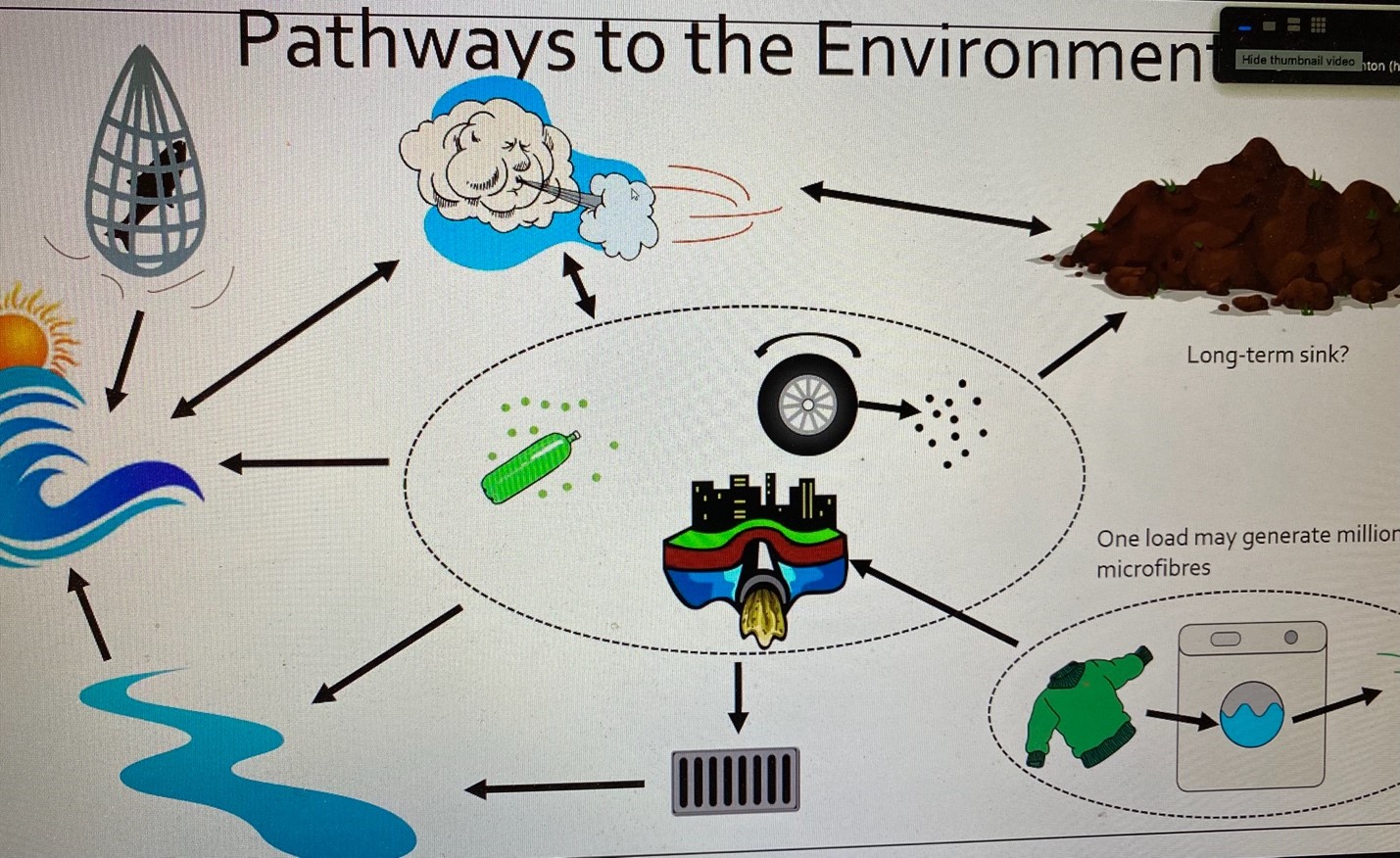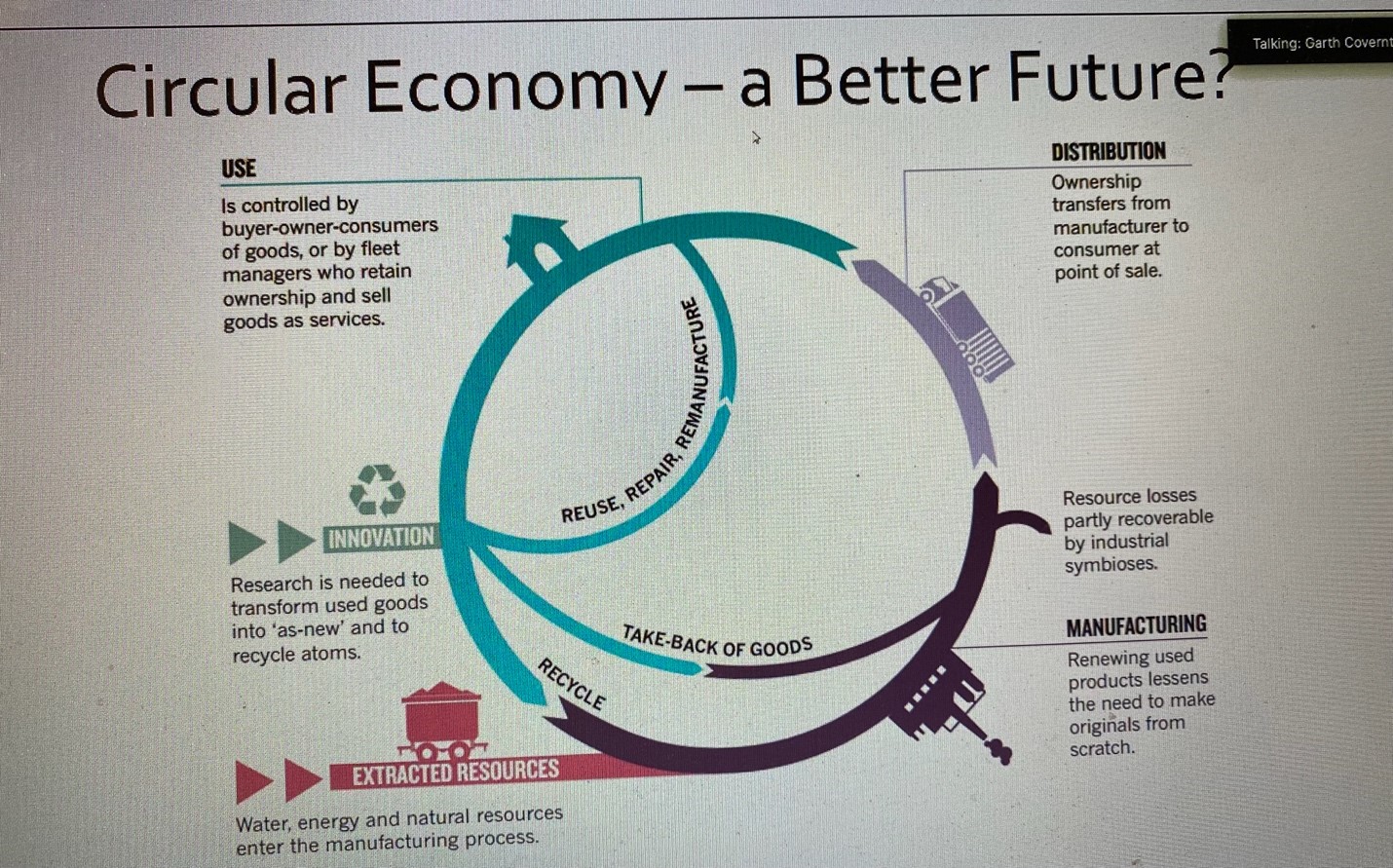Garth Covernton, who just weeks ago received his PhD, shared the results of his studies and work experience on the source, fate, and ecological implications of microplastic contamination in the marine environment. We learned that plastics made from fossil fuels are the major source of plastic waste, but sadly, less than 10% is recycled, and only 12% is incinerated. In other words, almost 80% ends up as landfill or litter. Plastic packaging accounts for over 50% of global plastic production. But we all depend on all kinds of other plastic products in our daily lives: bags, bottles, rope, textiles, pipes, resins paints, and many, many more. Garth’s academic interest focuses on microplastics or fibres, those that are less than 5mm in size. They come from many sources we would never think of: tire dust, synthetic textiles (outdoor clothing) and synthetic fibres in washing machine effluent. Interestingly, we are exposed to more microplastic particles in our homes than we are through our food! As the slide below indicates, there are many pathways for microplastics to enter the environment.

Microplastics are a complex contaminant, found almost everywhere, including the marine environment. Some are less dense and float, but most particles sink into the sediment on the ocean floor. We know marine organisms absorb and ingest microplastics, but it is difficult to show conclusively that they cause harm over a long period or a lifetime. For instance research shows that BC shellfish do not contain sufficient microplastic to make human consumption unsafe. But in many other areas, the effect on animals and people is not clear, suggesting the need for more research.
When the talk turned to exploring what can be done to mitigate the risk of microplastics, Garth felt efforts should target sewage and textiles. He explained we don’t understand enough yet about the hazards and exposure to calculate long-term risk. His best advice is to concentrate on what we do know by avoiding synthetic fibres by reusing, repairing and re-manufacturing plastic products. To show the complexities of the subject, Garth talked about the “Circular Economy” (see the slide below) which he hopes will become a road map for a better future.

We all face the tremendous challenge of reducing the world’s use of plastics, not to mention recycling more. Future research into the effect of microplastics on marine life and people is required. We look forward to watching Garth’s important and challenging career unfold.


